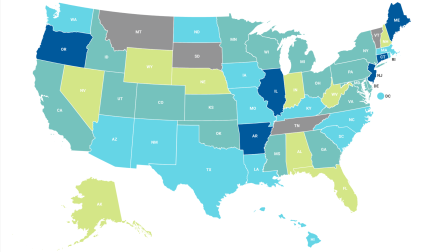
Metabolic acidosis – symptoms, complications & treatment

- Medically reviewed by
- AKF's Medical Advisory Committee
- Last updated
- June 6, 2024
Jump to
Metabolic acidosis is a buildup of acid in your body. Your kidneys help keep the right balance of acids in your body. Your body can have too much acid for two main reasons:
- your kidneys are not balancing or getting rid of enough acid, or
- your body is making too much acid.
Metabolic acidosis is common in people with kidney disease because their kidneys are not filtering their blood well enough. It can also happen in people with diabetes or kidney failure.
Doctors will do blood and urine tests to find out if someone has metabolic acidosis.
What are the symptoms of metabolic acidosis?
Many people do not have symptoms, but some people may have:
- Confusion
- Fast heartbeat
- Feeling sick to your stomach
- Headache
- Long and deep breaths
- Not wanting to eat
- Vomiting
- Feeling tired
- Feeling weak
What problems can happen from metabolic acidosis?
Here are some health problems that can happen if metabolic acidosis is not treated:
- Your kidney disease can get worse.
- Bone loss (osteoporosis), which can lead to a higher chance of fractures in important bones like your hips or backbone.
- Muscle loss because of less protein in your body.
- Endocrine disorders, which mean that glands that produce hormones in your body are not working like they should.
- Slowed growth in children.
- Inflammation (swelling, redness, and pain).
- Amyloid accumulation, which is a build-up of protein in your body that can hurt your joints, organs and brain.
- Increased chance of death.
How is metabolic acidosis treated?
There are no FDA-approved therapies for long-term treatment of metabolic acidosis. However, some studies show the treatments below may help keep blood acid levels balanced.
Alkali therapy

It is recommended to keep blood bicarbonate at levels above 22 mEq/L. The normal range is 22–29 mEq/L. People with metabolic acidosis have a blood bicarbonate level between 12–22 mEq/L, while people with severe metabolic acidosis fall below 12 mEq/L. There are medicines that can add more bicarbonate to your body to balance out the acid. One way to increase bicarbonate levels is through alkali therapy, which could include taking sodium bicarbonate. Your doctor could also suggest taking another similar supplement, such as calcium citrate, calcium carbonate, or calcium acetate.
Taking sodium bicarbonate introduces sodium (salt) into your body. The problem with this is that most people with later-stage chronic kidney disease have health problems that require them to limit sodium. This includes high blood pressure, heart disease, heart failure, or swelling. In some individuals, using sodium-based supplements could make health problems worse. They may have to take a different type of medication to help instead.
Sometimes there are side effects to sodium bicarbonate, including belching, bloating, flatulence, stomach pain, loss of appetite, feeling sick, and throwing up. You should not take sodium bicarbonate, or any other type of medicine to treat acid in your blood, without your doctor's approval.
Changes in what you eat
For people with metabolic acidosis, making changes in what they eat may help. For example, eating plant-based protein instead of animal-based protein may keep acid levels lower. Always talk to your doctor before you make any changes to your diet. Your doctor may also recommend that you see a registered dietitian who can help create a specific nutritional plan just for you.

